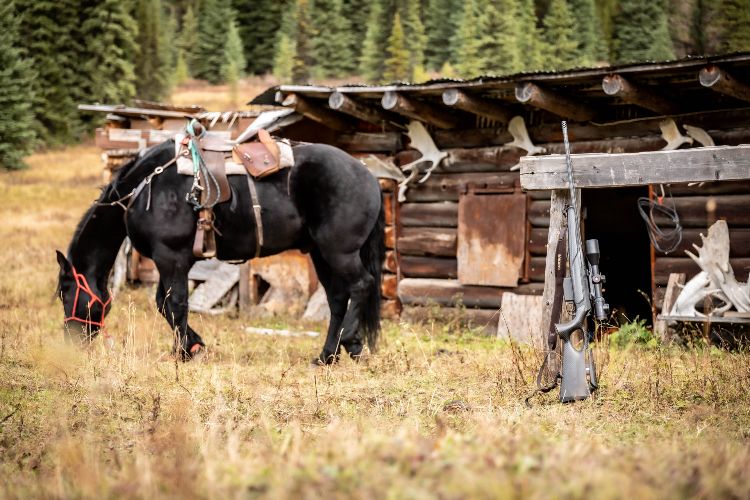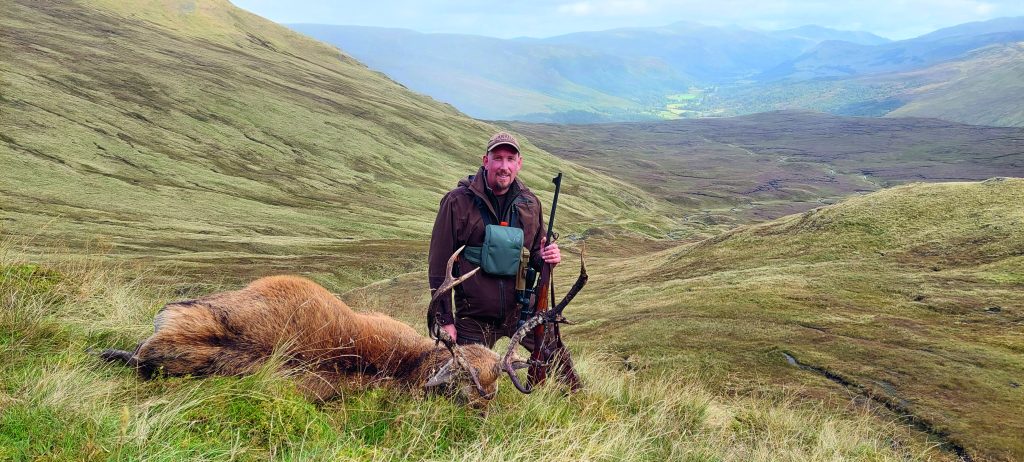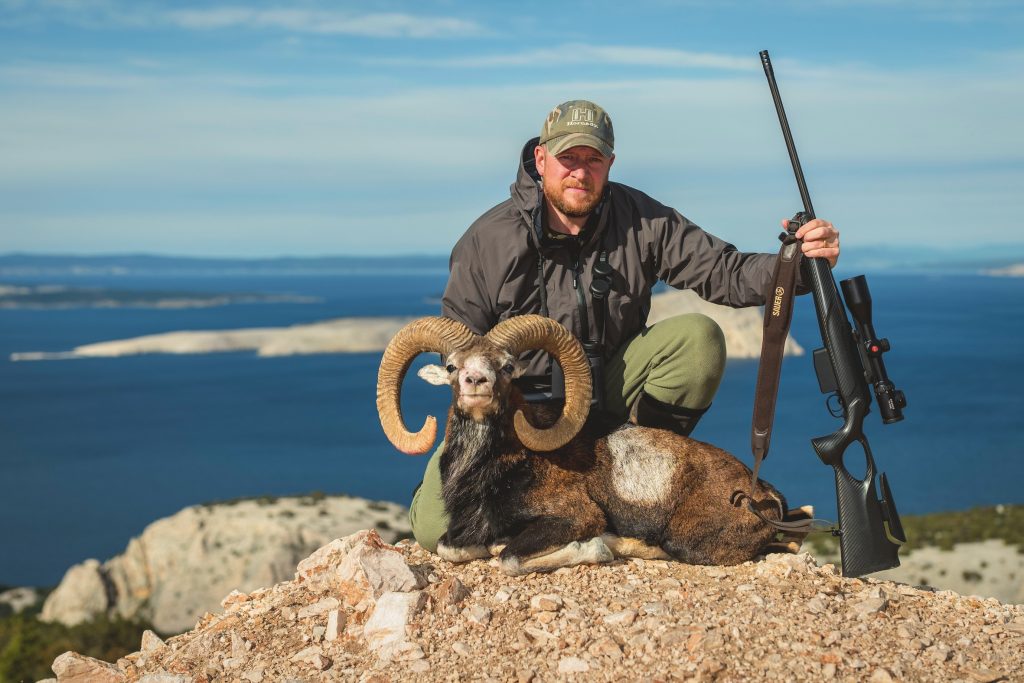Hunting mountain goat in British Columbia
Simon K Barr and Davey Hughes take on the challenge of uncertain weather in pursuit of the wily mountain goat, as they scale the British Columbia Rockies.
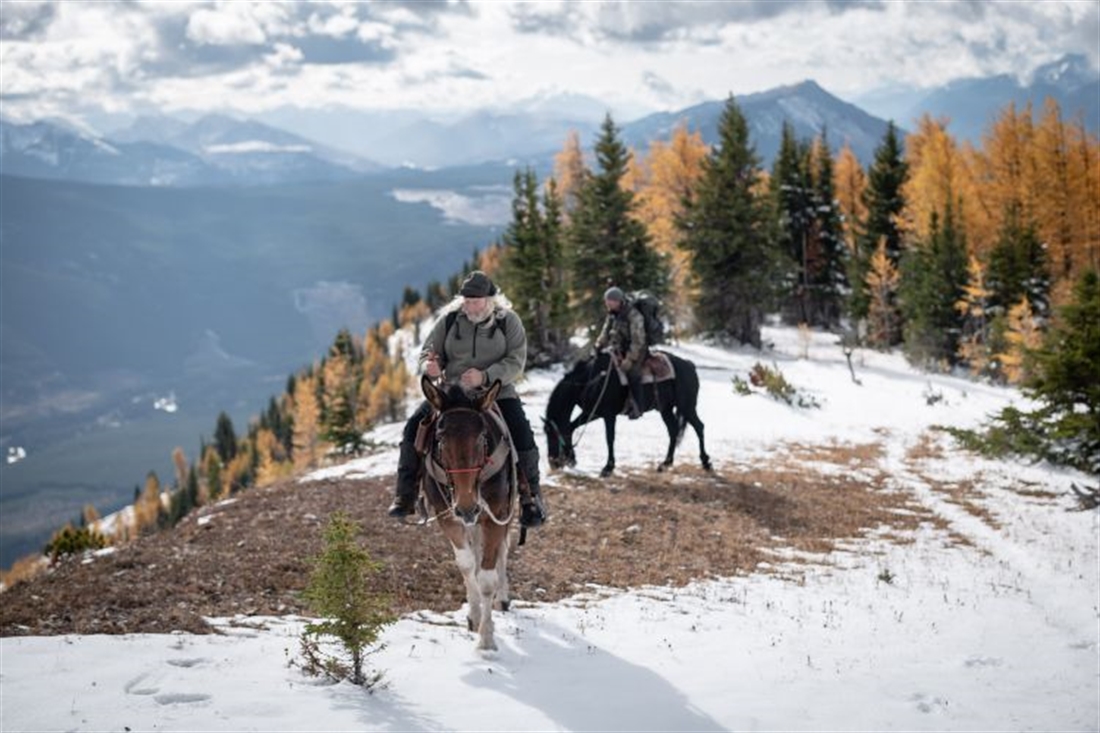
Mountain goats were one of the first mountain-dwelling ungulates to capture my imagination and encourage me to hunt outside Europe. I once saw a fully mounted billy standing on a near-scale artificial mountain peak at my first Dallas Safari Club convention 11 years ago and was intrigued by this unusual-looking white creature. I finally got around to planning a goat hunt and my friends at Hornady suggested Ryan Danstrom, of Quarrie Creek Outfitters in British Columbia, as the man I should talk to.
When I mentioned my plans to an avid Kiwi hunting friend, Davey Hughes, he promptly invited himself along. He didn’t want to hunt, having taken mountain goats before, but just relished a week in the awesome wilderness of the British Columbian Rockies.
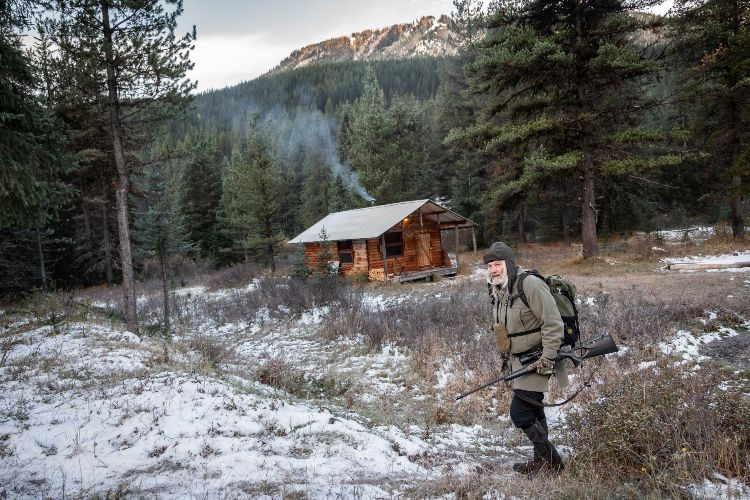
Goat hunts are always booked for eight days – the weather and animals are just so unpredictable – so on Ryan’s suggestion I’d also obtained a tag for elk in case we got lucky. Little was I to know quite how lucky we would be.
As my week approached, I checked the weather forecast with increasing worry. There were to be three solid weeks of rain, cloud and then very early season snow preceding our trip, so what would that mean for us? Amazingly, the day before we arrived the weather changed, and though it was cold with plenty of snow on the ground, it looked as if we’d have clear skies. A great recipe for glassing mountain tops and tracking.
Ryan is an old-school outfitter, so the entire hunt is done with horses, riding for six hours a day and on foot for the steeper climbs. The log-burner heated cabins are rustic but comfortable, and the landscape is largely unscathed by human interference, many miles from the mining towns that hold the bulk of the population in the area.
The morning after riding into camp the weather was on our side after three weeks of no visibility, so we wasted no time and rode out at first light. We made our way from camp, which was at around 5,000ft, to around 6,000ft, scouting the walls of the valley as we rode. Davey and Ryan were on mules, while I was on a bay gelding named Quatra.
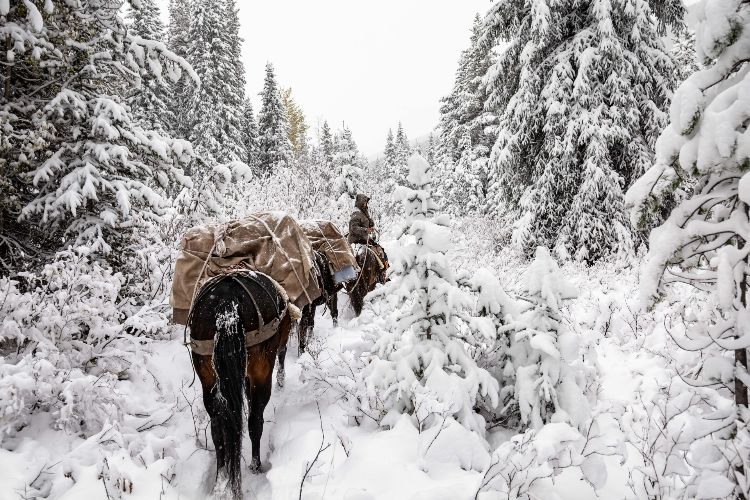
We were riding on trails that Ryan spends many days preparing during the summer off-season, with any fallen timber cut to allow ease of passage. He says this alone is a huge part of the undocumented conservation work that hunters and hunting outfitters do.
“We really look after this wilderness, which is something rarely acknowledged. The tag money you pay goes towards conservation, but in terms of boots on the ground, that’s us. We are the guardians of areas like this, where you cannot go with vehicles. We also send samples of the animals that are hunted in for records and the tag has to be verified by our local officials.”
The wildlife in this area is incredibly diverse, with not only mountain goats and elk, but also whitetail, mule deer, Rocky Mountain bighorn sheep, moose, lynx, bobcat, wolf, grizzlies and black bears. Most of these are hunted to some extent, all in a highly controlled manner with census information and tags, though grizzlies were taken off the list last year. As Ryan said: “It’s a decision that was made in the high towers, not by people with their feet on the ground, putting in the actual work. You don’t have to like what we do, but it’s hard when decisions are made for emotional reasons rather than scientific ones. Grizzlies are a species that bring up an emotional reaction.”
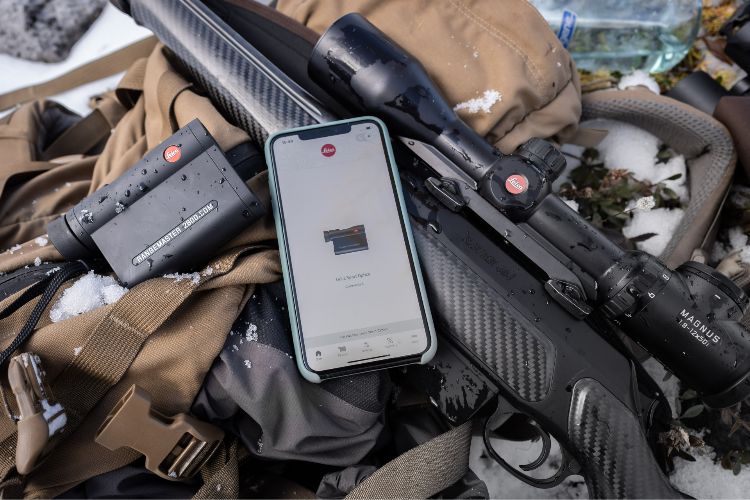
Three hours in and we saw some, but they were females, and while we were allowed to shoot them, Ryan tries to take out only mature males. It was another couple of hours on the horses before we spotted a single goat, a pretty good sign that it would be a billy rather than a nanny. “That’s a mature male,” Ryan said. “Let’s go for it.”
We tethered our rides, hydrated with some ice-cold water from the creek and started climbing. The billy we had seen was a good distance from us, still a steep climb away, but Ryan’s calm demeanour gave me confidence that this would not be a wasted climb. After an hour we had made good progress and were started to slow down to make sure we didn’t bump into anything we may not have seen and give the game away. Indeed, just then we came across a nanny and kid a few hundred yards below where we’d seen the billy. We knew that if the nanny scented or saw us we’d be finished for the day, so we slowed, considering every step and moving quietly over the snowy slopes.
Our slow progress got us closer and then, quite suddenly, the billy disappeared from sight. Ryan, knowing this territory, wasn’t worried. “It’ll come back into view shortly. Let’s just sit up here for a moment.” We were on a reasonably flat area and a large rock with a pack draped made a good resting spot for the spotting scope.
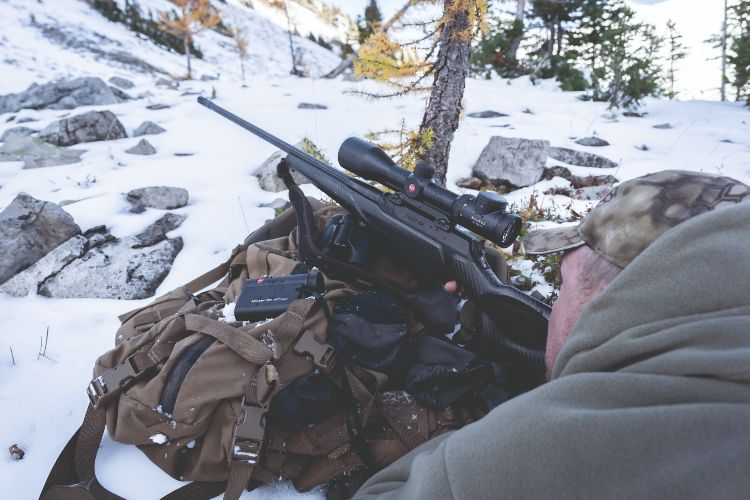
We settled and waited. It didn’t take long until the billy appeared above us, right where Ryan said. It wasn’t moving fast, just slowly traversing the near vertical face. “Whenever you are ready. There’s no rush,” said Ryan. So calmly, with both elbows rested in snow – my favourite shooting position – I took my time, held point of aim exactly on the scapula, and squeezed. None of this was dramatic – in this wild, hostile, unpredictable territory, the shot was one of the most controlled moments I’ve had for a long time.
But what happened next certainly was dramatic. The reaction to the shot was instantaneous and violent. All four of the goat’s legs went rigid and it toppled over onto its side and down the slope. Head over heels it tumbled, and every time it hit a rock Ryan winced, worried that its horns might break. For me there was the usual sense of relief that my bullet had found its mark and done its job cleanly. We watched as the billy bounced down, off the rocks and into powdered snow, ploughing to rest conveniently just 100yd from us, no longer a steep and challenging climb away.
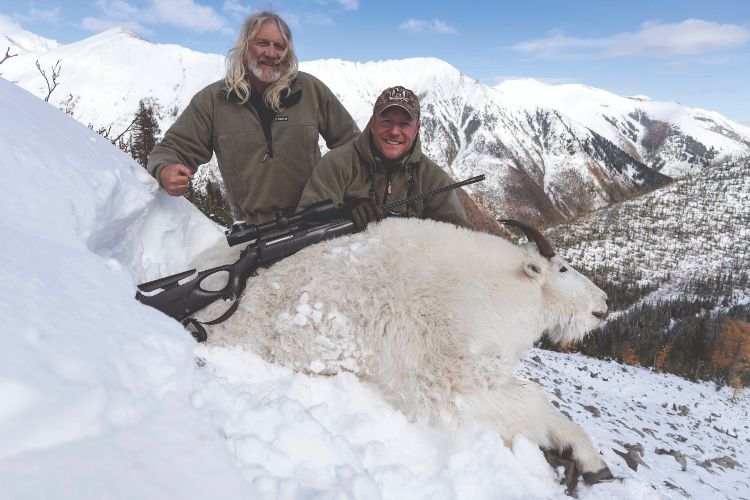
In the cold, glass-sharp air outside the cabin I used the satellite phone to tell my family the news. However, it turned out that they had news too. The story had just hit the media that Zac Goldsmith, minister for international environment, was proposing a complete ban on the import and export of trophies. I could barely believe it. I told Ryan, whose reaction was dismay and shock. “Don’t they realise what that means for conservation? For places like this, which rely on hunting tourism, where the tag pays for conservation and the guides rely on it for employment?”
We mulled over the news, discussing what far-reaching consequences a ban such as this would have worldwide. But while the news was depressing, I couldn’t help but be cheered by the knowledge that I’d be spending the rest of the week looking for elk, immersed in the wilderness. That’s the real allure of these trips.
Related Articles
Get the latest news delivered direct to your door
Subscribe to Rifle Shooter
Elevate your shooting experience with a subscription to Rifle Shooter magazine, the UK’s premier publication for dedicated rifle enthusiasts.
Whether you’re a seasoned shot or new to the sport, Rifle Shooter delivers expert insights, in-depth gear reviews and invaluable techniques to enhance your skills. Each bi-monthly issue brings you the latest in deer stalking, foxing, long-range shooting, and international hunting adventures, all crafted by leading experts from Britain and around the world.
By subscribing, you’ll not only save on the retail price but also gain exclusive access to £2 million Public Liability Insurance, covering recreational and professional use of shotguns, rifles, and airguns.
Don’t miss out on the opportunity to join a community of passionate shooters and stay at the forefront of rifle technology and technique.



